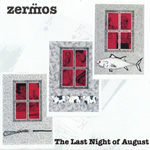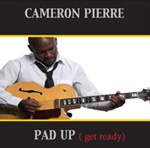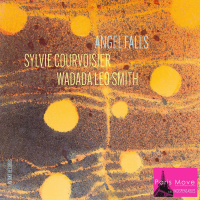Home » Jazz Articles » Profile » Donny Hathaway: Celebrating the Spirit and the Soul
Donny Hathaway: Celebrating the Spirit and the Soul
A testament to his amazing talent, many of today
 Few artists in Soul music incorporated the rhythms, technological interventions, and spiritual ethos of American jazz more fully than the late Donny Hathaway. Over the course of his recording career, the Chicago soul legend produced music which reminded many listeners of the fusion work of Donald Byrd, Bobbi Humphrey, Archie Shepp, Alice Coltrane, and Yusef Lateef. Connecting Hathaway with these and other jazz artists of the late sixties and seventies was his efforts to provide an aural landscape of black inner city life, his explicit spirituality, and his embrace of various musical genres. An ambitious artist constantly searching for new ways to articulate musically the complexity of the human spirit, Hathaway was never afraid to stretch rhythm and blues into previously unheard shapes, textures, and sounds. Schooled in the rich traditions of African American music, the gifted musician fused jazz, classical, gospel, and of course the blues into his particular brand of soul music. Far too often, jazz critics interested in 1970s fusion focus solely on jazz musicians' forays into rock, soul, and funk, but Hathaway's career forces us to consider the ways in which the black musical landscape was enriched as a result of rhythm and blues musicians' borrowing of jazz styles and idioms.
Few artists in Soul music incorporated the rhythms, technological interventions, and spiritual ethos of American jazz more fully than the late Donny Hathaway. Over the course of his recording career, the Chicago soul legend produced music which reminded many listeners of the fusion work of Donald Byrd, Bobbi Humphrey, Archie Shepp, Alice Coltrane, and Yusef Lateef. Connecting Hathaway with these and other jazz artists of the late sixties and seventies was his efforts to provide an aural landscape of black inner city life, his explicit spirituality, and his embrace of various musical genres. An ambitious artist constantly searching for new ways to articulate musically the complexity of the human spirit, Hathaway was never afraid to stretch rhythm and blues into previously unheard shapes, textures, and sounds. Schooled in the rich traditions of African American music, the gifted musician fused jazz, classical, gospel, and of course the blues into his particular brand of soul music. Far too often, jazz critics interested in 1970s fusion focus solely on jazz musicians' forays into rock, soul, and funk, but Hathaway's career forces us to consider the ways in which the black musical landscape was enriched as a result of rhythm and blues musicians' borrowing of jazz styles and idioms. Sixty-one years ago, on October 1, 1945, Donny Hathaway was born in the culturally vibrant city of Chicago, Illinois. Moving to St. Louis, Missouri as a young child, Hathaway was steeped in the religious tradition of the black church. A fine arts scholarship eventually led the Chicago native to Howard University, where he benefited immensely from the rich musical scene on campus and in the city's black enclaves. Anyone strolling down the popular streets of DC could enjoy the sounds of Edward Kennedy "The Duke Ellington, Donald Byrd, Herbie Hancock, Julian "Cannonball" Adderley, among other frequent visitors to the thriving metropolis. Quite possibly, Hathaway also absorbed the sounds of the Ramsey Lewis' Trio, which contributed significantly to the popularization of cocktail lounge jazz during the sixties. Only one year after Hathaway's arrival in DC, Lewis recorded The In Crowd at the Bohemian Caverns in May, 1965. Serious about honing his talent, Hathaway started playing in a trio led by another Howard student, Ric Powell. Eventually, Hathaway's reputation as an incredibly gifted musician extended beyond the nation's capital. Leaving Washington, D.C, for Chicago in 1968, Hathaway distinguished himself as an excellent pianist and arranger on recording sessions for Phil Upchurch, Jerry Butler, and of course, the prodigious singer-songwriter, Curtis Mayfield. Fully immersing himself in Chicago's music scene, Hathaway arranged Curtis Mayfield and the Impressions' Young Mod's Forgotten Story, which was released in 1969 and climbed to #21 on the Rhythm and Blues charts. The recording benefited immensely from Hathaway's strong harmonic sense, and Mayfield was definitely impressed by the young man's talent: "This fella, you could just talk to him over the phone and play him a piece of music, and he could call out every chord and every movement and where the fifth was and the augmented and tell you what key it was in. Self-taught, Mayfield had a tremendous amount of respect for Hathaway's expansive musical knowledge. "He really baffled me, Mayfield later admitted. "I always admired people that could do that because I never had that kind of learning. It was just amazing. Even though Hathaway was classically trained, the soul singer never underestimated the power of emotion and feeling. "He had a lot of learning in him, Mayfield perceptively noted, "but he was instilled with a lot of depth of the religious feeling of black music.
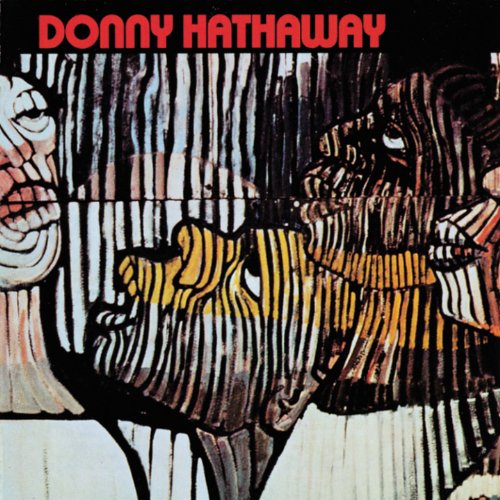 Such depth and brilliance brought the twenty-four year old to the attention of record executives and musicians at Atlantic Records. Signed to Atlantic's subsidiary, Atco, in 1969, Hathaway excelled as a singer, arranger, producer, and session player. Over the period between 1970 and 1973, Donny Hathaway released five albums: Everything is Everything , Donny Hathaway, Donny Hathaway Live, Comeback Charleston Blue , and Extension of A Man. None were more impressive than his debut release, Everything is Everything .
Such depth and brilliance brought the twenty-four year old to the attention of record executives and musicians at Atlantic Records. Signed to Atlantic's subsidiary, Atco, in 1969, Hathaway excelled as a singer, arranger, producer, and session player. Over the period between 1970 and 1973, Donny Hathaway released five albums: Everything is Everything , Donny Hathaway, Donny Hathaway Live, Comeback Charleston Blue , and Extension of A Man. None were more impressive than his debut release, Everything is Everything .
Thirty-six years have passed since the release of Donny Hathaway's magnum opus, Everything is Everything, but the passage of time has not diminished its importance as a foundational text in Modern Soul Music. Sparsely constructed tunes enabled Hathaway to showcase his majestic tenor as well as his improvisational skills as a pianist. Funky bass solos by Phil Upchurch, Louis Satterfield, and Marshall Hawkins created an aural landscape which at times invoked memories of Charles Mingus' "Wednesday's Night Prayer Meeting." Undoubtedly Hathaway drew from the tradition and rhythms of jazz-soul, but his greatest inspiration was the women and men who populated America's racial ghettoes. Striking in its candor and social realism, Hathaway's debut brilliantly communicated the complexity, dynamism, and rhythmic beauty of black life in the post-Civil Rights era. Not long before Hathaway's debut release, cultural critic James Stewart, in his seminal 1968 article, "The Need for a Revolutionary Black Art, called for the development of artistic productions "consistent with a black style, our natural aesthetic styles, and our moral and spiritual styles. None of the available information on Donny Hathaway provides insight on his opinion about the ways in which black artistic expression could be used to fashion a radical political consciousness among the African American masses, but his profound love and admiration for the style, rhythm, and culture of black people was apparent on his debut release. Songs such as "Thank You Master for My Soul," "Sugar Lee," and "Je Vous Aime" exposed the cultural world in which African Americans congregated, loved, played, and prayed.
A testament to the Civil Rights and Black Power movement's profound influence on black artistic production during the sixties and seventies, Hathaway also gave voice to the pains, frustrations, and struggles of thousands of women and men whose lives had not improved in the immediate post-Civil Rights era. Three tunes on his debut are particularly moving: "Tryin' Times, "To Be Young Gifted and Black, and the celebrated "Ghetto. A beautiful instrumental featuring some of Donny's most impressive work on the Fender Rhodes, "The Ghetto was an ode to those blacks and browns (Operation Bootstrap program in San Juan resulted in the massive migration of Puerto Ricans to NYC and other eastern cities.) coping with the reality of deindustrialization, chronic unemployment, and rising crime rates. The song's infectious groove conjures up images of an urban landscape dominated by abandoned factory buildings, boarded up-businesses deserted by the black bourgeoisie, and dangerous corners populated by women and men with very little faith in the American dream. Especially noteworthy was Hathaway's utilization of human voices, which added not only texture to his aural landscape, but a touch of urban realism to an already gripping tale of inner city life. One can easily interpret the guttural moans and screams of the voices emanating from this classic song as those belonging to black women and men impacted by the restructuring of the United States' industrial economy. Hathaway was not alone in his focus on urban life. A certain fascination with the sounds and rhythms of inner city life characterized the recording of jazzmen and women as well. Interesting takes on the rhythm, beauty, and slickness of urban life can be heard, for example, on Yusef Lateef's "Russell and Eliot or Bobbi Humphrey's "Chicago, Damn, and "Harlem River Drive.
Hathaway addressed the hell of life in the post-industrial city, but he also found something redeeming about the urban landscape, something empowering about the ways in which women and men of America's Chocolate Cities discovered and created community. Critical to their ability to create community and survive under undeniably difficult circumstances, according to Hathaway, was their faith and connection to a higher power. A profound faith in the existence of an interventionist God who intercedes on behalf of the oppressed enabled black women and men to look beyond the miseries and absurdities of life.
Emerging from most of Hathaway's work is an image of a transcendent, interventionist God who hears the existential cries of the downtrodden. Consider his moving "Thank You Master for My Soul , which features one of the most brilliant jazz piano solos in rhythm and blues history. Thanking God for providing him with not only the material necessities of life, but also spiritual nourishment in the time of tremendous need, Hathaway articulates fully his appreciation for God's grace. "Cause you didn't have to hear my moanin, he acknowledges during one of the song's most gripping moments, "Oh you didn't have to hear my groanin, but you kept me... "Thank You Master serves as Hathaway's testimony of how God's divine power enabled him (and perhaps us) to transcend pain and maintain our humanity in the face of seemingly insurmountable adversity. Quite possibly Hathaway would have agreed with the black theologian James Cone, who in his classic, The God of the Oppressed, wrote:
It does not matter what oppressors say or do or what they try to make us out to be. We know that we have a freedom not made with human hands. It is faith that defines our person, and thus enables black people to sing when the world says that we have nothing to sing about, to pray when prayer seems useless to theologians and philosophers, and to preach when the world will not listen.
 Twenty-four years of age at the time of his debut's release, Hathaway had managed to put forth an interesting portrait of a courageous yet deeply flawed people in all their complexity. No topic was off-limits. Love, pain, disappointment, politics, and religion received attention from the gifted singer and pianist. Not afraid to explore the various dimensions of black music, Hathaway shared with his audience his love of jazz, blues, gospel, and even modern classical music.
Twenty-four years of age at the time of his debut's release, Hathaway had managed to put forth an interesting portrait of a courageous yet deeply flawed people in all their complexity. No topic was off-limits. Love, pain, disappointment, politics, and religion received attention from the gifted singer and pianist. Not afraid to explore the various dimensions of black music, Hathaway shared with his audience his love of jazz, blues, gospel, and even modern classical music.
Enormous praise for Hathaway's debut emerged from various corners of the music world. Congratulatory remarks came from Ray Charles, Aretha Franklin, Carole King, among others. To launch the talented musician into superstardom, Atlantic determined his next release would be a more pop-oriented record. Not even a year after Everything is Everything appeared in record stores, Atlantic Records released Donny Hathaway's eponymous second album on April 2, 1971. It was not particularly successful so far as sales; however two songs received critical and popular praise: "Giving Up and Leon Ware's "A Song For You. Identifying "Giving Up as the "benchmark in the art of forthright emotional vocal communications, Atlantic Records executive Jerry Wexler praised the emotive ballad as "one of the two or three greatest productions in Atlantic's long history, worthy of placement alongside Ray's "What'd I Say and Aretha's "Respect. Continuing his praise of the masterpiece, Wexler noted: "Most songs are lucky to have a single climax, but "Giving Up has at least four; Hathaway's arrangements builds to peak after peak, King Curtis's bone-chilling tenor break lifting the spirits to ever greater elevations. It's just a stone masterpiece. Fans may have appreciated "Giving Up and "A Song for You, but tepid best describes their response to his eponymous album. A few critics dismissed the album as unfocused. Turned off by what he viewed as Hathaway's pretentious approach to music, the noted music critic Robert Christgau gave the album a "D- . Said the dismissive Christgau in his terse review: "Jerry Wexler and Atlantic, who would seem to know more about this sort of thing than I do, are pushing this refugee from the production booth as the Man Who Will Revitalize Soul Music. Could be, as I say, but if having soul means digging on all this supper-club melodrama and homogenized jazz then I'm content to be sterile, square, and white. Yeah yeah yeah. Such commentary seems unduly harsh; however, one could understand some folks' disappointment with the album. Quite simply, the Donny Hathaway album was not as musically, aesthetically, and socially progressive as his debut or the soul masterpieces released in 71: Marvin Gaye's What's Going On, Sly and the Family Stone's There's A Riot Going On,, Funkadelic's Maggot Brain, and Aretha Franklin's Young, Gifted and Black. Still, there were some solid moments on the album. Such moments, unfortunately, didn't translate into pop superstardom. Climbing to number six on Billboard Magazine's Top Soul Albums list, Donny Hathaway failed to move beyond #89 on the Pop Charts.
Executives may have been disappointed with Hathaway's sales, but they had to be appreciative of the part he played in the success of one of the company's more successful releases of 1971: Aretha' Franklin's Young, Gifted, and Black. Significantly influencing the album's mature sound was Donny Hathaway, whose understated organ shaped the rhythm section's sound on six of the album's cuts. No doubt, Hathaway's standout performance is on the airy track, "Daydreaming, which opens with the ethereal sounds of his electric piano. Hathaway's piano flourishes contrasts beautifully with the muscular sound of Bernard Purdie's killer drumming. Fully cognizant of Hathaway's critical role in her album's success, Aretha Franklin praised the soul legend in her autobiography, From These Roots. "Donny, Franklin explained, "was multimusical the way some folks are multilingual. He was a young master and a soul artist of tremendous talent.
Talented indeed, Hathaway continued to amaze his peers as he busied himself with numerous musical projects during the hectic year of 1972. Few projects would be more ambitious than the soundtrack, Comeback Charleston Blue, which he wrote, recorded, produced, and arranged under the supervision of Quincy Jones. Showcasing his jazz chops as a pianist and composer, Hathaway drew on the musical legacy of Duke Ellington and Count Basie. An underappreciated work seldom discussed by even Hathaway enthusiasts, Comeback Charleston Blue featured a richly textured sound, which incorporated expansive string orchestrations, disjointed jazz rhythms, and his incredibly lush vocals. A listen to "Tim's High" and "Liberation, reveals the extent to which Hathaway understood the power of moods and atmospheres. Clearly Hathaway also had a firm grasp of clasical music. Several songs on Comeback Charleston reveal Hathaway's deep admiration for the compositional style of the French composers commonly referred to as Les Six. An ambitious musician whose expansive mind refused to content itself with familiarity with only one musical tradition, Hathaway had begun to immerse himself in the work of Georges Auric, Louis Durey, Arthur Honegger, Darius Milhaud, Francis Poulenc, and German Tailleferre. Such exploration continued on his next studio project.
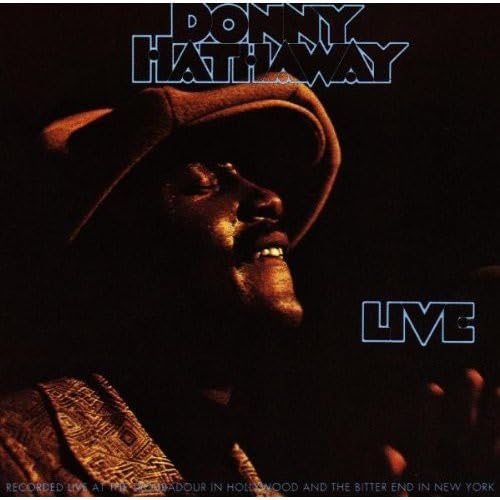 Staying busy in 1972, Hathaway also recorded his highly acclaimed, live album, Donny Live, which garnered the crooner his first and only gold record. A hallmark of the soul period was the release of several amazing live records: Aretha Franklin's Amazing Grace and Live at the Filmore, James Brown's Love and Peace, and Curtis Mayfield's Curtis Live. Few were more impressive than Hathaway's Live. Standouts on the live release include his soulful rendition of Johh Lennon's "Jealous Guy, an equally impressive cover of Marvin Gaye's "What's Goin' On, "The Ghetto, "Little Ghetto Boy, and "Voices Inside (Everything is Everything) . Listening to the audience's passionate response during the recording enables one to better appreciate soul musicians' unique relationship to their audience. No doubt, Hathaway's live recording possessed the emotional fervor of a down home, church revival. Enormously encouraging, the energetic crowds at New York's Bitter End and LA's Troubadour responded enthusiastically to Hathaway's every moan, groan, piano lick, and chord change. Certainly at his improvisational best in live settings, Hathaway drew from the talents of his superb band (which included such skilled musicians as Cornell Dupree, Willie Weeks, Earl DeRouen, Richard Tee, Phil Upchurch, Mike Howard, and Fred White) and the enthusiasm of his audience. Truly an amazing recording, Hathaway's live album moved five hundred thousand units in less than six months. It was his first and only gold certification as an artist.
Staying busy in 1972, Hathaway also recorded his highly acclaimed, live album, Donny Live, which garnered the crooner his first and only gold record. A hallmark of the soul period was the release of several amazing live records: Aretha Franklin's Amazing Grace and Live at the Filmore, James Brown's Love and Peace, and Curtis Mayfield's Curtis Live. Few were more impressive than Hathaway's Live. Standouts on the live release include his soulful rendition of Johh Lennon's "Jealous Guy, an equally impressive cover of Marvin Gaye's "What's Goin' On, "The Ghetto, "Little Ghetto Boy, and "Voices Inside (Everything is Everything) . Listening to the audience's passionate response during the recording enables one to better appreciate soul musicians' unique relationship to their audience. No doubt, Hathaway's live recording possessed the emotional fervor of a down home, church revival. Enormously encouraging, the energetic crowds at New York's Bitter End and LA's Troubadour responded enthusiastically to Hathaway's every moan, groan, piano lick, and chord change. Certainly at his improvisational best in live settings, Hathaway drew from the talents of his superb band (which included such skilled musicians as Cornell Dupree, Willie Weeks, Earl DeRouen, Richard Tee, Phil Upchurch, Mike Howard, and Fred White) and the enthusiasm of his audience. Truly an amazing recording, Hathaway's live album moved five hundred thousand units in less than six months. It was his first and only gold certification as an artist.
Celebration was in order not only for his gold certification, but also for the success of his album with his colleague from Howard University, Roberta Flack. Roberta Flack and Donny Hathaway climbed to number two on the Black Albums Chart and number three on the Pop Charts. "Where Is the Love received enormous play on soul, jazz, and pop stations across the country.
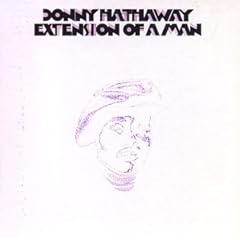 Such commercial success eluded Hathaway's next solo project, Extension of a Man .Viewed by some as his most ambitious recording, Extension of a Man was released on June 18, 1973. Opening with the six-minute orchestral piece, "I Love The Lord He Heard My Cry, Pts. 1 & 2 , Hathaway's third album demonstrated his talents as a composer, romantic crooner, band leader, and pianist. The album's impressive opener compares favorably to the tomes/suites on one rather popular jazz record of the time, Archie Shepp's 1972 release, The Cry of My People. It was an effort to provide a compositive portrait of the various sounds and genres of Afro-American music, something various artists in jazz were also attempting. Extension of a Man was more of an artistic than commercial success. However, two of the album's tunes, the Motown-influenced "Love, Love, Love and the bluesy "I Love You More Than You Know cracked the Top Twenty. To dismiss the album as unsuccessful underestimates its impact on many in the black community. A moving song covered by two amazingly talented jazz artists, Kenny Garrett and Charlie Hunter, "Someday We'll All Be Free, resonated deeply with black women and men who found political, economic, and social freedom still elusive during the turbulent seventies. Smooth jazz fans may be familiar with another tune off the album, "Valdez in the Country , performed by George Benson on his In Flight release. "Valdez in the Country had been recorded a year earlier by the San Francisco-based, white rock group, Cold Blood, whose debut album First Taste of Sin on Reprise records had been produced by Hathaway.
Such commercial success eluded Hathaway's next solo project, Extension of a Man .Viewed by some as his most ambitious recording, Extension of a Man was released on June 18, 1973. Opening with the six-minute orchestral piece, "I Love The Lord He Heard My Cry, Pts. 1 & 2 , Hathaway's third album demonstrated his talents as a composer, romantic crooner, band leader, and pianist. The album's impressive opener compares favorably to the tomes/suites on one rather popular jazz record of the time, Archie Shepp's 1972 release, The Cry of My People. It was an effort to provide a compositive portrait of the various sounds and genres of Afro-American music, something various artists in jazz were also attempting. Extension of a Man was more of an artistic than commercial success. However, two of the album's tunes, the Motown-influenced "Love, Love, Love and the bluesy "I Love You More Than You Know cracked the Top Twenty. To dismiss the album as unsuccessful underestimates its impact on many in the black community. A moving song covered by two amazingly talented jazz artists, Kenny Garrett and Charlie Hunter, "Someday We'll All Be Free, resonated deeply with black women and men who found political, economic, and social freedom still elusive during the turbulent seventies. Smooth jazz fans may be familiar with another tune off the album, "Valdez in the Country , performed by George Benson on his In Flight release. "Valdez in the Country had been recorded a year earlier by the San Francisco-based, white rock group, Cold Blood, whose debut album First Taste of Sin on Reprise records had been produced by Hathaway.
Sadly, the years following Extension proved difficult for Hathaway, personally and artistically. Severe bouts with depression limited his artistic input tremendously, even though the singer remained under contract with Atlantic Records. Four years after the release of Extension, however, Donny surfaced on Roberta Flack's Blue Lights in the Basement. A Quiet Storm staple penned by Reggie Lucas and James Mtume, former members of Miles Davis' fusion band, Hathaway and Flack's duet, "The Closer I Get to You achieved gold status and reached number one and number two on the rhythm and blues and pop charts respectively. Unfortunately for those who envisioned even greater commercial acclaim for the gifted young man, Hathaway's life came to a tragic end on January 13, 1979 in New York. Only hours after Hathaway completed a recording session with Flack, his body was found outside the posh Essex House Hotel. Weeks later, New York medical examiner John S. Pearl ruled his death a suicide, but the singer's family and friends claimed vehemently that his death was accidental rather than intentional. "He was extremely positive, producer Arif Mardin remembered, "He was not depressed at all. He was in perfect spirits.
Speaking before one thousand mourners in attendance at Hathaway's funeral at Missionary Baptist church in St. Louis, the Reverend Jesse Jackson focused on the singer's musical legacy rather than the circumstances surrounding his unfortunate death. "How Hathaway died, Jackson informed the crowd, "cannot consume our time, but rather how he lived and what he contributed. "His legacy, Jackson continued, "is music. Veteran record producer Jerry Wexler echoed markedly similar sentiments years later in his autobiography, Rhythm and the Blues: A Life in American Music: "I loved Donny and continue to derive sustenance from his records. When he died he was only thirty-three, and already being called a giant; I often think of what he might have accomplished. His talent had no limits. The beauty of his voice and the sweetness of his soul remain a permanent part of the liturgy.
A testament to Hathaway's amazing talent, many of today's musicians have drawn from his legacy, his songbook, his vocal approach, and his emotional fervor. Such diverse artists as Beck, Pharrell Williams, Common, Frank McComb, and Raul Midon have acknowledged their indebtedness to his artistic work and spirit. Of course, his influence permeates the work of his incredibly talented daughter Lalah Hathaway, whose beautiful tone, impeccable phrasing, and brilliant sense of timing has received praise from her loyal fan base and music critics. Very much like her father, she's refused to limit herself to one particular genre or stylistic approach.
Nearly thirty years have passed since Hathaway's death, but his music continues to teach us the power of art, the benefits of improvisation, and the lessons to be learned from crossing artificially created genre boundaries. Sadly, the unfortunate circumstances surrounding Hathaway's death has colored the ways in which we not only talk about his life, but analyze his music. Too often his music is portrayed as invariably sad, melancholic, or dreary. Frequently ignored in discussions on Hathaway's music was his profound sense of humor, his love for his people, and his faith in humanity. His willingness to explore the variety of human emotions coupled with his incredible talent as a singer, pianist, and arranger distinguished him as one of the most innovative yet underappreciated artists of the 1970s.
Tags
PREVIOUS / NEXT
Support All About Jazz
 All About Jazz has been a pillar of jazz since 1995, championing it as an art form and, more importantly, supporting the musicians who make it. Our enduring commitment has made "AAJ" one of the most culturally important websites of its kind, read by hundreds of thousands of fans, musicians and industry figures every month.
All About Jazz has been a pillar of jazz since 1995, championing it as an art form and, more importantly, supporting the musicians who make it. Our enduring commitment has made "AAJ" one of the most culturally important websites of its kind, read by hundreds of thousands of fans, musicians and industry figures every month.


